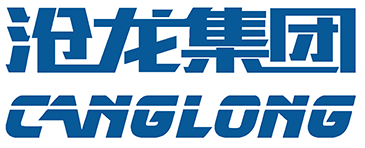What is the use of PIR coldstorage panels in the refrigeration market?
In the fields of cold chain logistics, food processing, and pharmaceutical storage, PIR coldstorage panels (polyisocyanurate insulation panels) are gradually replacing traditional materials and becoming the core components of refrigeration infrastructure due to their superior insulation performance and environmental characteristics. Starting from technological advantages, application scenarios, and global market patterns, this article deeply analyzes the commercial value of PIR refrigerated panels, and focuses on key demand countries and trend predictions.
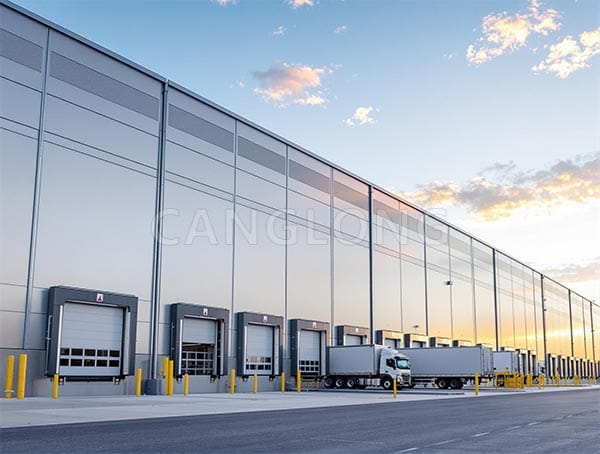
Core advantages and application scenarios of PIR coldstorage panels
1. Why choose PIR cold storage panel?
The PIR coldstorage panels uses polyisocyanurate as the core material, combined with polyurethane foaming technology, and its thermal conductivity is as low as 0.018 W/(m · K), far lower than traditional EPS (0.035-0.041) and XPS (0.028-0.030). In addition, PIR materials have:
- Fireproof performance: meets the B1 level flame retardant standard (UL94 certification) and complies with European and American building regulations.
- Anti humidity corrosion: The closed cell structure prevents water vapor infiltration and is suitable for high humidity environments (such as Southeast Asian cold storage).
- Environmental friendliness: Recyclable materials account for over 90%, meeting the requirements of the EU REACH regulation.
2. Full coverage of application scenarios
- Cold chain logistics: used as insulation layer for refrigerated trucks and containers to reduce transportation energy consumption.
- Food industry: construction of processing workshops and cold storage facilities for meat, seafood, and frozen foods.
- Medical storage: Constant temperature and humidity storage for vaccines and biological samples.
- Commercial refrigeration: energy-saving renovation of supermarket refrigerators and convenience store refrigerators.
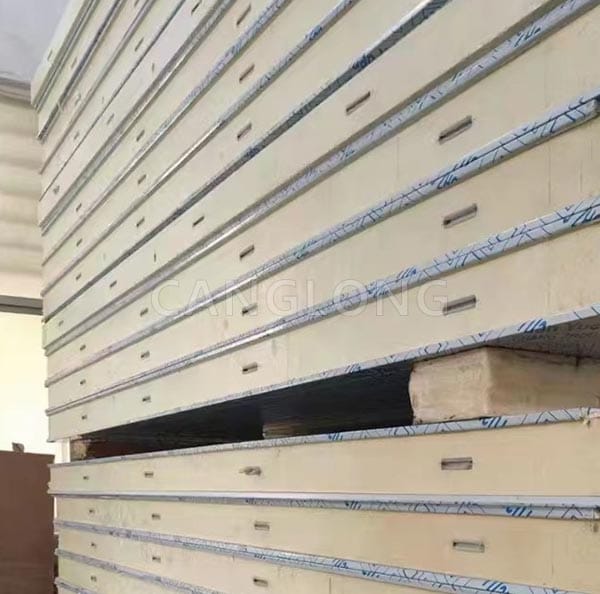
Global market trends: Which countries have the strongest demand?
1. North American market: leading technology, stable demand
As the most mature countries in cold chain infrastructure, the United States and Canada are mainly used to upgrade existing cold stores (such as Wal Mart and Costco cold chain centers). The market size will reach 1.2 billion US dollars in 2023, with an annual growth rate of about 5%. Local brands such as Dow Chemical and BASF dominate, but Chinese companies are gradually penetrating the mid to low end market with price advantages (15% -20% lower).
2. European market: Environmental policies drive upgrading
The EU’s Green Deal mandates a 40% reduction in carbon emissions from cold storage by 2030 and promotes the use of PIR coolroom panels to replace traditional EPS/XPS. Germany, France, and the Netherlands are the main purchasers, accounting for 60% of the total demand. It is worth noting that due to supply chain adjustments after Brexit, the import volume of PIR boards in the UK has surged by 35% (Q2 2023 data).
3. Asia Pacific Market: Emerging Growth Engines
- China: The explosive growth of fresh e-commerce platforms such as Meituan Youxuan and Dingdong Maicai has driven investment in cold room construction, and the market size of PIR coldstorage panels will exceed 800 million RMB in 2023.
- India: The government is promoting the “Food Processing Park Plan” and expects a 200% increase in cold storage capacity over the next five years.
- Southeast Asia: Vietnam and Indonesia have a cold chain coverage rate of less than 30%, and multinational companies such as Tyson Foods and Dole are accelerating their layout. The dependence on PIR board imports is as high as 70%.
4. Middle East and Africa: Potential yet to be unleashed
Saudi Arabia and the United Arab Emirates have seen a surge in demand for cold storage due to high temperatures, but their local supply chains are weak and they rely on imports. The pharmaceutical cold chain upgrade projects in Egypt and South Africa have started using PIR cold room panels, but they are more price sensitive.
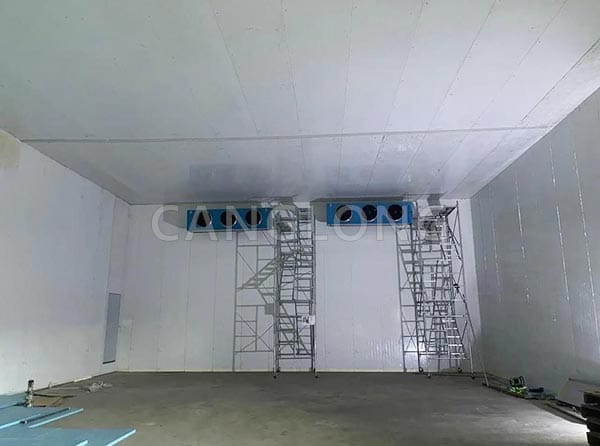
Market competition pattern and key enterprises
1. International giants dominate the high-end market
- Dow Chemical in the United States: specializes in fire-resistant PIR panels, occupying the high-end medical cold storage market in Europe and America.
- Bayer Germany: launches biodegradable PIR composite material, in line with the EU environmental trend.
- Kawneer Japan: Focusing on modular cold storage solutions, leading the market share in Southeast Asia.
2. Differentiated competition among Chinese enterprises
Chinese manufacturers (such as Canglong Group, Hongbaoli, Wanhua Chemical) prioritize cost-effectiveness and export basic PIR panels to Europe through OEM models, while also radiating to the American and Southeast Asian markets through localized factories (such as Thailand and Mexico).
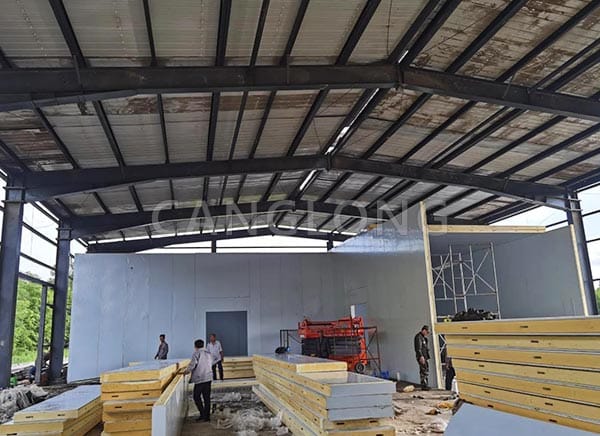
Future Trends: Technological iteration and regional strategies
Technical direction
- Ultra low thermal conductivity: Develop PIR sandwich panel with thermal conductivity ≤ 0.015 W/(m · K).
- Intelligent integration: Embedded temperature and humidity sensors to achieve real-time monitoring of energy consumption in cold room.
Regional strategy suggestion
- Europe and America: Focusing on high-end medical and food processing projects, emphasizing fire prevention and environmental certification.
- Southeast Asia/Africa: Provide low-cost modular solutions and bind infrastructure contractors.
- Middle East: Developing high-temperature resistant PIR panels to cope with extreme climates above 50 ℃.
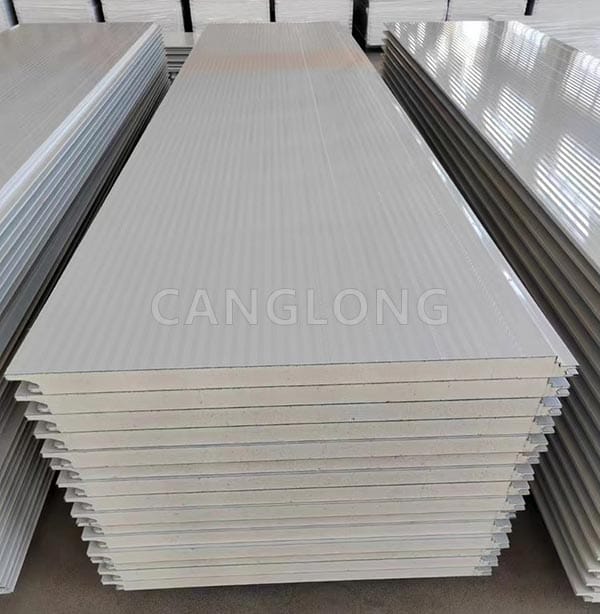
Conclusion
As the “energy-saving heart” of cold chain infrastructure, the market demand for PIR coldstorage panels are closely related to cold chain policies, e-commerce development, and energy costs in various countries. If enterprises want to seize the global market, they need to accurately match regional demands – the overlapping regulations of Europe and America, the cost-effectiveness of emerging markets, and the need for high-temperature resistant technology in the Middle East. In the next five years, as the global investment in cold chain exceeds 300 billion US dollars, the market potential of PIR cold storage panels will be further released.
